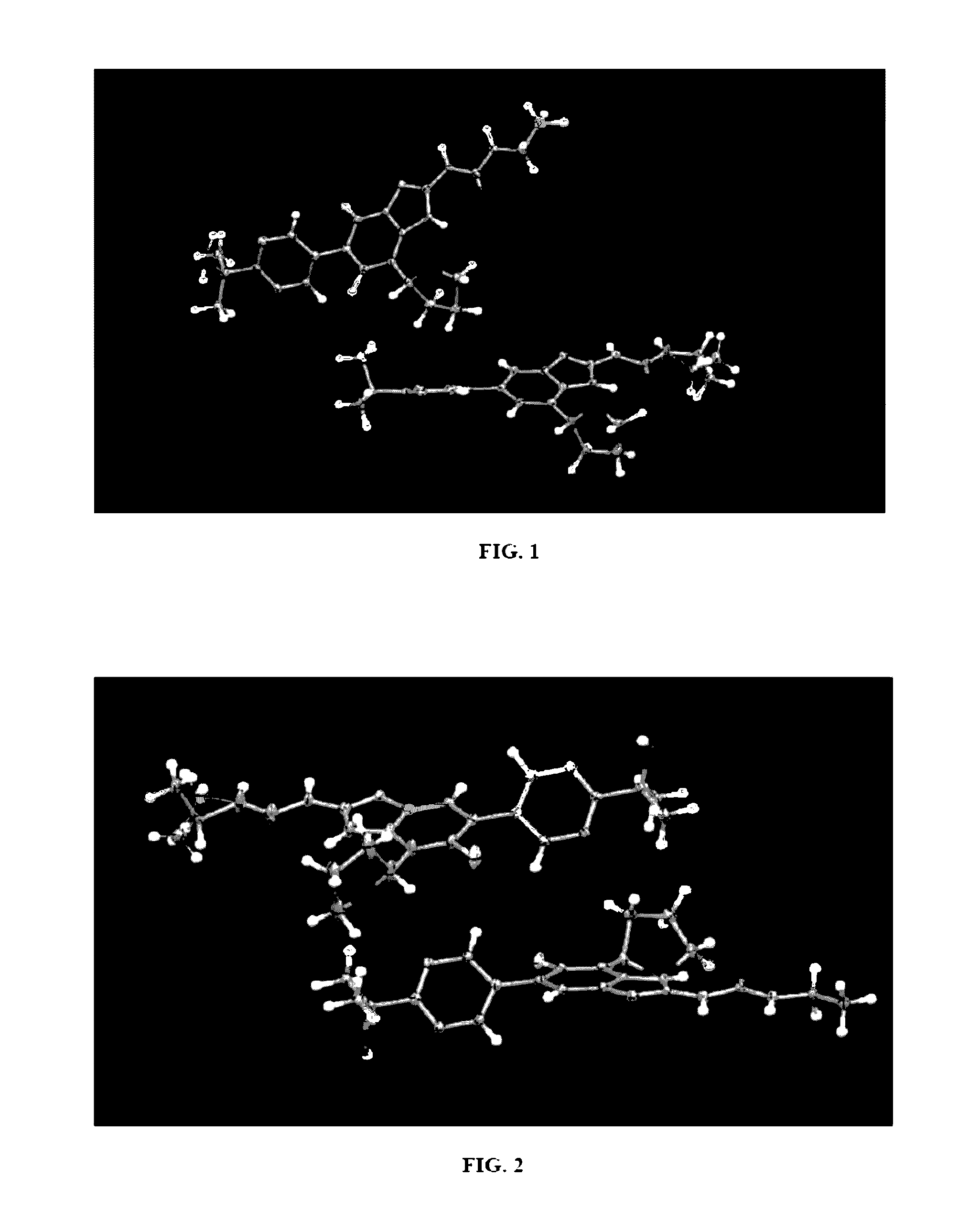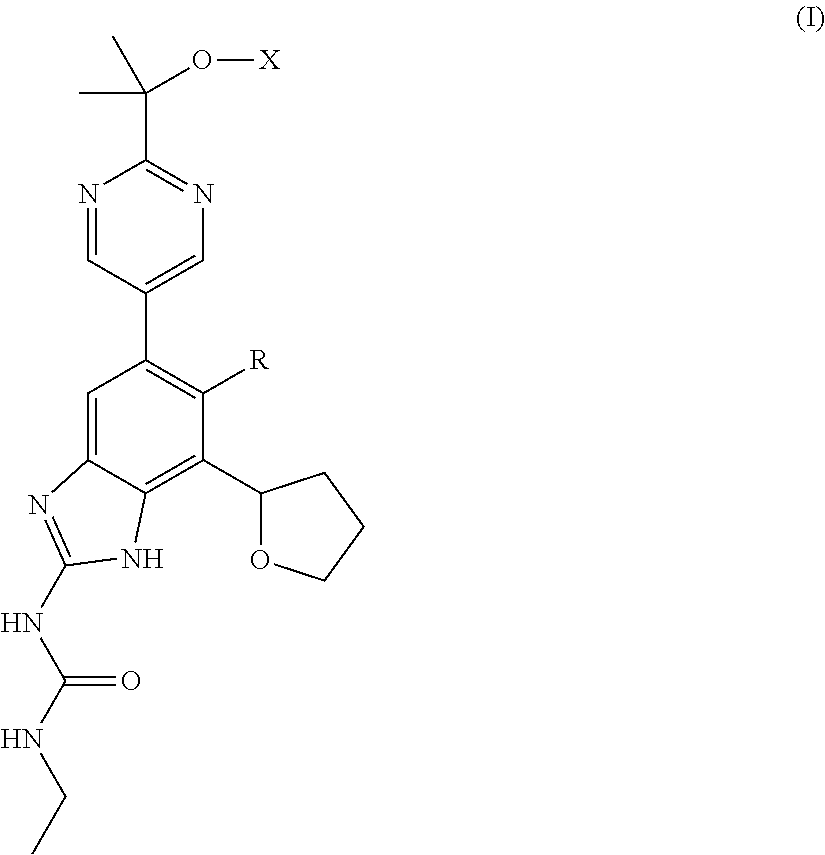Combination therapy to treat Mycobacterium diseases
a technology of mycobacterium and combination therapy, which is applied in the direction of antibacterial agents, heterocyclic compound active ingredients, organic active ingredients, etc., can solve the problems of serious liver dysfunction, liver dysfunction, and difficult to tolera
- Summary
- Abstract
- Description
- Claims
- Application Information
AI Technical Summary
Benefits of technology
Problems solved by technology
Method used
Image
Examples
example 1
Preparation of 2-(2-nitrophenyl)-2,5-dihydrofuran and 2-(2-nitrophenyl)-2,3-dihydrofuran (3a&3b)
[0301]
[0302]Mixed 1-bromo-2-nitro-benzene (1) (600 g, 99%, 2.941 mol, Alfa Aesar A11686), 1,3-bis(diphenylphosphino)propane (62.50 g, 97%, 147.0 mmol, Alfa Aesar A12931), 1,4-dioxane (2.970 L, Sigma-Aldrich 360481), potassium carbonate (812.9 g, 5.882 mol, JT-Baker 301201), and 2,3-dihydrofuran (2) (1.041 kg, 99%, 1.124 L, 14.70 mol, Aldrich 200018). A stream of nitrogen was bubbled through the stirring mixture for 4 hrs, followed by addition of palladium (II) acetate (16.51 g, 73.52 mmol, Strem 461780) and continuation of deoxygenation for another 10 minutes. The reaction mixture was stirred at reflux under nitrogen overnight (NMR of a worked-up aliquot showed complete consumption of arylbromide). It was allowed to cool, diluted with hexane (1 L), filtered through a short plug of Florisil® (500 g, −200 mesh), and eluted with EtOAc. The filtrate was concentrated under reduced pressure (2-...
example 2
Preparation of 2-tetrahydrofuran-2-yl-aniline (4)
[0303]
[0304]Placed 5% palladium on carbon (16.3 g, 50% wet, 3.83 mmol, Aldrich 330116) in a Parr bottle under nitrogen, followed by MeOH (100 mL, JT-Baker 909333). Added the crude mixture of 2-(2-nitrophenyl)-2,5-dihydrofuran and 2-(2-nitrophenyl)-2,3-dihydrofuran (3a&3b)) (163 g) dissolved in MeOH (389 mL), followed by NEt3 (237.6 mL, 1.705 mol, Sigma-Aldrich 471283). Placed the vessel on a Parr shaker and saturated with H2. Added 30 psi H2 and shook until consumption complete (LCMS and NMR showed complete reaction). The reaction mixture was purged with nitrogen, filtered through Celite™ and rinsed with EtOAc. The filtrate was concentrated on a rotary evaporator giving a brown oil. Repeated the reaction three more times on the same scale and the batches were combined for purification. The crude product was vacuum distilled (ca. 15 ton) collecting the distillate at 108-129° C. to give (4) as a clear faint yellow oil (427.9 g, average ...
example 2a
Preparation of (R)-2-(tetrahydrofuran-2-yl)aniline (4a)
[0305]
[0306]Dissolved 33 g of compound (4) into MeOH (265 ml) which resulted in a concentration of approximately 125 mg / ml. The mixture was filtered through a 0.2 micron membrane filter then chromatographed on a ChiralPak® IC column (30 mm×150 mm, column temp 35° C., Chiral Technologies) at 100 bar using a Berger multigram supercritical fluid chromatographic system. Mobile phase was (90:10) CO2:CH3OH eluting at 350 ml / min with UV monitoring at 220 nanometers. Obtained 15.64 g of desired product (4a) as a green oil. Analytical SFC ([90:10] CO2:CH3OH, at 5 ml / min on a ChiralPak IC column (4.6×100 mm) held at 35° C. and run at 100 bar pressure with UV monitoring at 220 nm) showed 95.5% ee with 95% overall purity.
PUM
| Property | Measurement | Unit |
|---|---|---|
| w/w | aaaaa | aaaaa |
| pressure | aaaaa | aaaaa |
| temperature | aaaaa | aaaaa |
Abstract
Description
Claims
Application Information
 Login to View More
Login to View More - R&D
- Intellectual Property
- Life Sciences
- Materials
- Tech Scout
- Unparalleled Data Quality
- Higher Quality Content
- 60% Fewer Hallucinations
Browse by: Latest US Patents, China's latest patents, Technical Efficacy Thesaurus, Application Domain, Technology Topic, Popular Technical Reports.
© 2025 PatSnap. All rights reserved.Legal|Privacy policy|Modern Slavery Act Transparency Statement|Sitemap|About US| Contact US: help@patsnap.com



